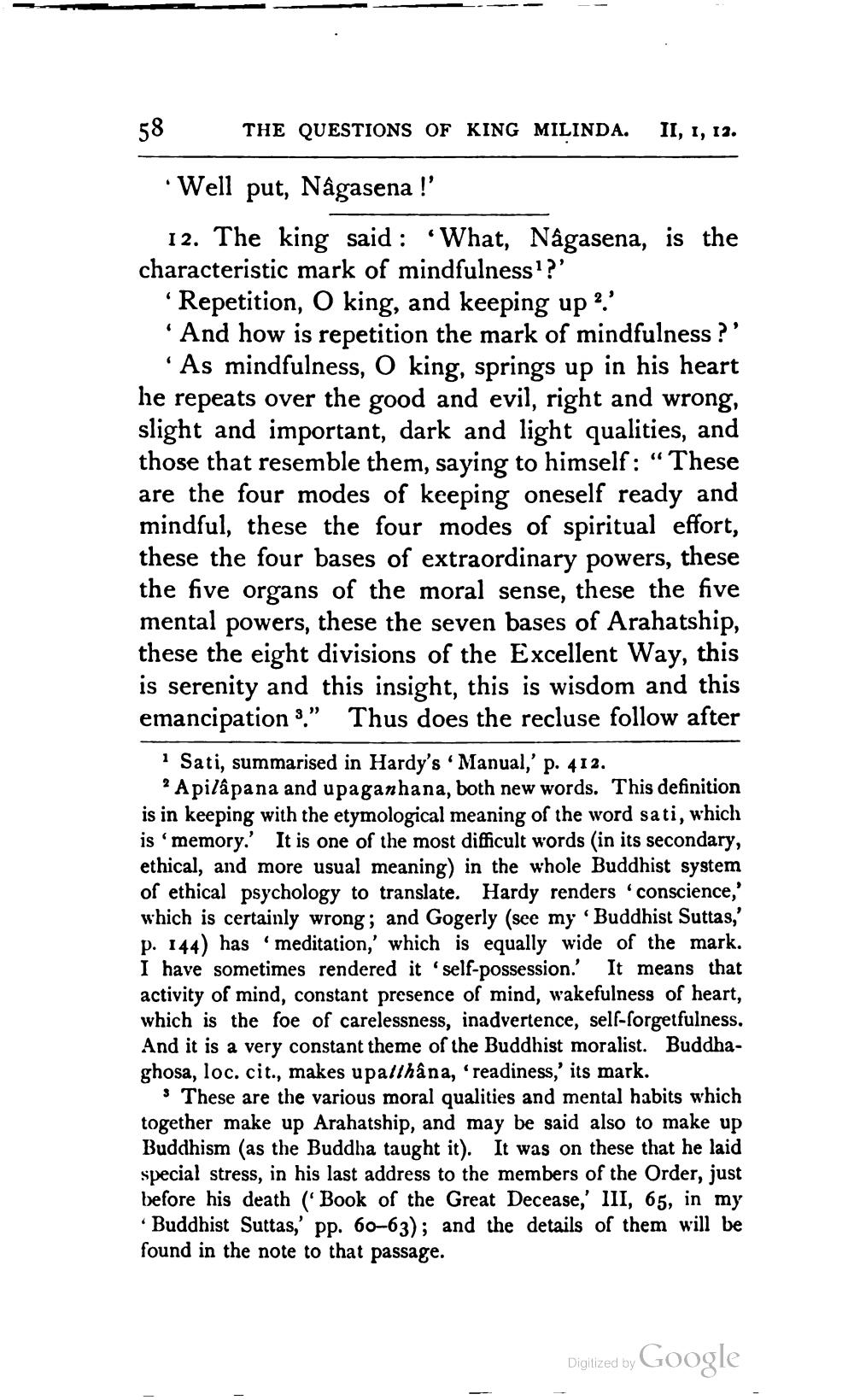________________
58
THE QUESTIONS OF KING MILINDA. II, 1, 13.
Well put, Nagasena !'
12. The king said: "What, Nagasena, is the characteristic mark of mindfulness??'
Repetition, O king, and keeping up ?' *And how is repetition the mark of mindfulness ?''
· As mindfulness, O king, springs up in his heart he repeats over the good and evil, right and wrong, slight and important, dark and light qualities, and those that resemble them, saying to himself: “These are the four modes of keeping oneself ready and mindful, these the four modes of spiritual effort, these the four bases of extraordinary powers, these the five organs of the moral sense, these the five mental powers, these the seven bases of Arahatship, these the eight divisions of the Excellent Way, this is serenity and this insight, this is wisdom and this emancipation 3." Thus does the recluse follow after
Sati, summarised in Hardy's “Manual,' p. 412. ? A pilâ pana and upaganhana, both new words. This definition is in keeping with the etymological meaning of the word sati, which is 'memory. It is one of the most difficult words in its secondary, ethical, and more usual meaning) in the whole Buddhist system of ethical psychology to translate. Hardy renders conscience,' which is certainly wrong; and Gogerly (see my 'Buddhist Suttas,' p. 144) has meditation,' which is equally wide of the mark. I have sometimes rendered it 'self-possession. It means that activity of mind, constant presence of mind, wakefulness of heart, which is the foe of carelessness, inadvertence, self-forgetfulness. And it is a very constant theme of the Buddhist moralist. Buddhaghosa, loc. cit., makes upalthâna, readiness' its mark.
* These are the various moral qualities and mental habits which together make up Arahatship, and may be said also to make up Buddhism (as the Buddha taught it). It was on these that he laid special stress, in his last address to the members of the Order, just before his death ( Book of the Great Decease,' III, 65, in my
Buddhist Suttas,' pp. 60-63); and the details of them will be found in the note to that passage.
Digitized by Google




